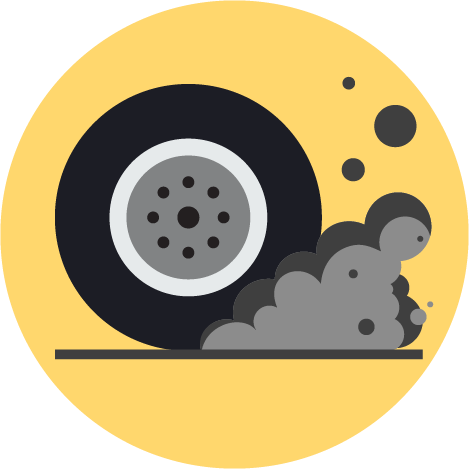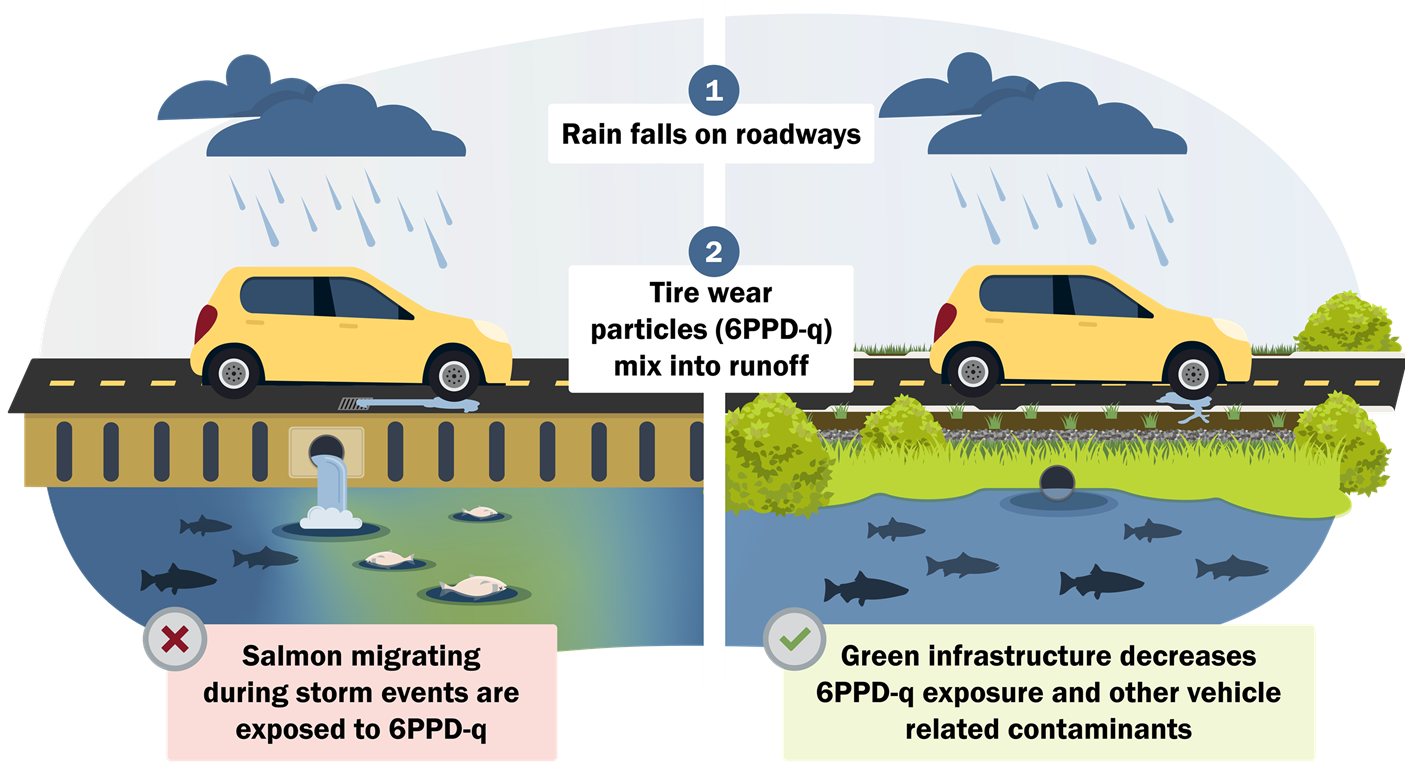Tire anti-degradant (6PPD) and 6PPD-quinone (6PPDQ)
6PPD State of the Science Two-Day Virtual Forum
Please join us for a two-day virtual forum on Dec. 9 and Dec. 10, 2025 from 12 p.m. to 4 p.m. to learn more about the latest research and actions on 6PPD and 6PPD-quinone.
Each day we will have:
- Livestreamed lightning talks from 12 p.m. to 3 p.m.
- Breakout sessions from 3 p.m. to 4 p.m. (registration required)
For more information, go to the 6PPD State of the Science event page.

We work with Tribal and local governments, state and federal agencies, academic institutions, and industrial organizations to reduce the pollution and sources of 6PPDQ released from tires in Washington.
Stay updated on our work and sign up for the 6PPD email list!
What are the impacts of 6PPDQ?
Driving causes tires to release dust and small particles because of friction on the road. These particles contain 6PPDQ, which then washes into stormwater, which can then spread to rivers, streams, and the Puget Sound. Since 6PPDQ was only recently discovered, we are still learning about this chemical and its impacts on wildlife.
Learn more about the connection between tires, fish, and us.
6PPDQ can end up in freshwater or marine environments harming wildlife. Green infrastructure can help remove toxic chemicals like 6PPDQ from stormwater.
Taking action to protect salmon
We’re focusing on three key efforts to effectively reduce the threat of 6PPDQ to salmon:
- Understand the problem: Develop scientific methods to measure 6PPDQ in the environment and identify affected areas.
- Reduce stormwater pollution: Identify stormwater management practices to treat 6PPDQ and tire debris before it reaches streams; update guidance for local governments to use; and, increase funding for stormwater infrastructure.
- Reduce sources of 6PPD: Research alternate chemical preservatives that could replace 6PPD in tires, and evaluate if those chemicals are actually safer.
Related links
Contact information
6PPD team
6PPD@ecy.wa.gov
360-688-4993


